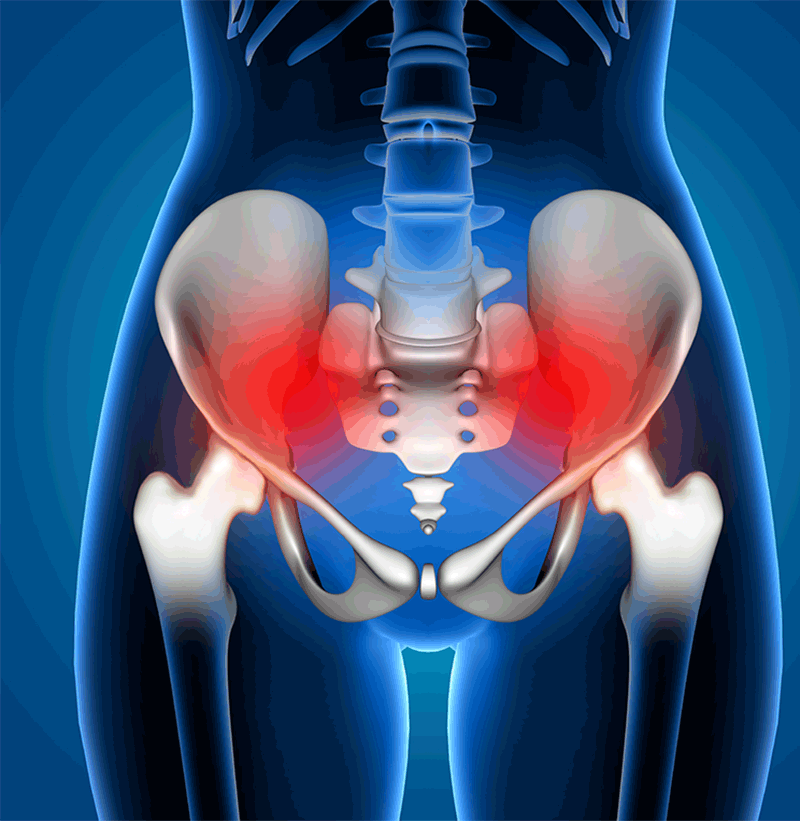What causes Sacroiliac Joint Dysfunction?
Sacroiliac joint dysfunction or SIJ dysfunction is defined by limited movement of the joints at the bottom of the spine. Specifically, in the region that connects the sacrum to the pelvis. This can cause pain in the lower back and legs, or inflammation of the joints which is known as sacroiliitis.
Your sacrum is located in your lower back (the lumbar area of the spine above the tailbone). It is triangular in shape and sits at the bottom of the spine. The sacrum consists of five fused vertebrae. It is also connected to the pelvic bone or iliac crest, on the right and left sides at the sacroiliac joints
Hypermobility and Hypomobility
Sacroiliac joint dysfunction refers to pain in these joints when they move either too much or too little. When the ligaments of the SIJ joint becomes too loose, it is called Hypermobility. SIJ Hypermobility can develop during pregnancy or injury to the ligaments. Limited movement of the SIJ ligaments is called Hypomobility, this can be caused by degenerate joint disease such as arthritis.
Symptoms of Sacroiliac Joint Dysfunction
SIJ pain usually presents as pain in the lower back or glutes. However, the pain can expand to the nearby muscles and can cause muscle spasms and develop trigger points in response to the SIJ dysfunction.
Common symptoms and causes of sacroiliac joint dysfunction:
- Dull aches in the lower back. Felt on one side or on both sides.
- Pain that spreads to the hips, glutes or groin or one side of the upper leg.
- Stiffness and reduced movement in the lower back, hips, pelvis, and groin.
- Pain feels worse when there is extra pressure on the sacroiliac joint, such as running or jogging, going up stairs and lying or putting weight on one side.
- Sciatic like pain (sharp, hot, stabbing pain & numbness in glute region and back of thigh that rarely extends below knee)
- Different leg length. Gait issues can cause uneven pressure on the pelvis causing wear and tear on the SIJ as well as increasing pain in the area.
- Repetitive movement and stress on the SIJ can contribute to pain. These include high impact sports, repetitive heavy lifting. If these muscles are weak then the stress from prolonged sitting and standing can cause SIJ pain.
- Pregnancy and post pregnancy causes SIJ pain in women due to hormonal changes causing the ligaments to relax and can continue on after pregnancy causing SIJ instability and pain.
Using Remedial Massage Therapy to treat SJD
Remedial massage and Myotherapy can be very effective in the treatment of SIJ dysfunction. Soft tissue techniques such as deep tissue massage, trigger point therapy, muscle energy techniques, and Dry Needling Therapy can help increase the range of movement if there is a restriction or soft tissue damage in the SIJ. Your therapist will tailor a program specific to your needs and prescribe you will specific exercises to maximise your recovery. If you have SIJ dysfunction or would like more information about our treatment options, please contact us Phillip Island Massage Therapy.
